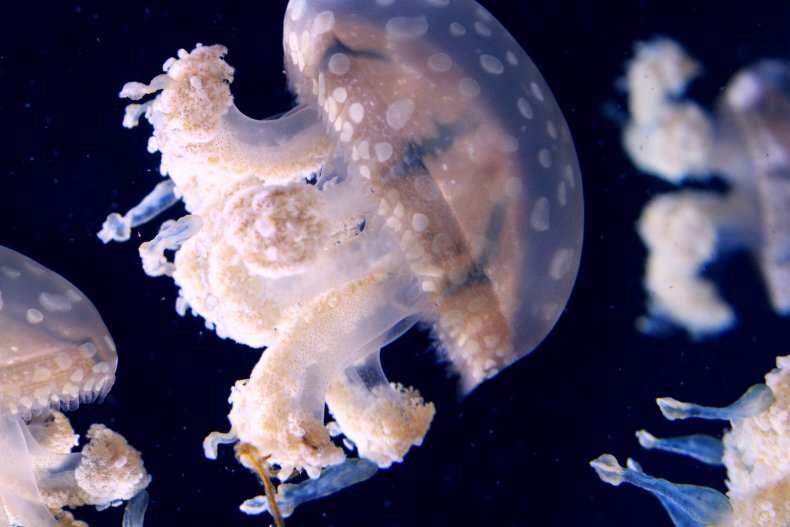Giant blooms of pink jellyfish have been reported in Palawan, Philippines, as beaches are left deserted during the coronavirus pandemic.
Sheldon Rey Boco, a PhD candidate in marine biology at Griffith University, Australia, shared a video he said was taken on March 23.
The Philippines’ Department of Environment and Natural Resources (DENR) reshared the clip, which shows a seemingly endless congregation of Crambione cf. mastigophora, nicknamed “sea tomato,” in Corong Corong Beach in El Nido, Palawan.
Jellyfish certainly are not affected by #COVID19 restrictions. Here is a bloom of #jellyfish medusae of the tomato 🅠jelly, Crambione cf. mastigophora in El Nido, S. Philippines 🇵ðŸ‡
🎥 Alimar Amor 23 March 2020 pic.twitter.com/5avr1ptJdy— Sheldon Rey Boco (@SheldonRey) March 28, 2020
“These hundreds or thousands of medusae are probably present in late January or February but because of wind, current and tidal conditions, they only seem to appear during March in Palawan,” said Boco, co-founder of the Philippine Jellyfish Stings Project, Manila Bulletin reported.
“The atmosphere, water velocity, current, tide and even geological features of the bay or any body of water can influence the occurrence of medusae and their blooms.”
Boco added: “There are years when blooms or populations of a jellyfish are high and there are also years when they are few or even almost absent.”
El Nido may be teeming with jellies but Benny Antiporda of the DENR told Business Mirror the blooms weren’t exceptional.
Antiporda, who is the DENR undersecretary for Local Government Units (LGUs) and Solid Waste Management Concern, told the Philippines news outlet that the jellyfish bloom is a yearly occurrence.
“These jellyfish were brought by the ocean current and usually, they end up in Corong-Corong Bay,” he said. He explained quarantines enforced in the area prevented locals from harvesting the animals, which in turn has allowed these jellyfish communities to thrive.
Jellyfish may be uniquely placed to benefit from climate change as new habitats open up. According to the World Economic Forum, the animals flourish in waters with lower oxygen levels, while overfishing has reduced levels of other animals that either compete with jellyfish for food, such as anchovies, or eat jellyfish themselves, such as tuna.
Climate change may also boost jellyfish populations by allowing jelly embryos and larvae to develop faster, according to Smithsonian.
This could lead to more blooms like the one seen in El Nido or the one that hit Ireland in 2007, when mauve stinger jellyfish asphyxiated more than 100,000 farmed salmon, as reported at the time by The Telegraph.
Last month, Malaysia’s national news agency Bernama revealed thousands of Crambione mastigophora had washed ashore Labuan beach on Labuan Island, near Borneo’s northern tip.
In 1999, 50 truckloads of jellyfish were removed from the island Luzon in the Philippines after causing a power cut, BBC News reported at the time. According to authorities, the jellyfish had been sucked up into a power plant near the country’s capital, Manila.



















